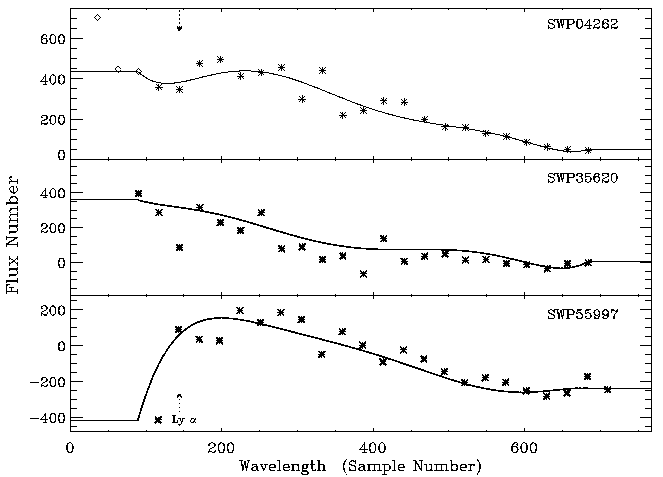(Panel b): A comparison of the final background solutions with the
Pass 1 for SWP35620, a spectrum taken of (Panel c): A comparison of the final background solutions with the
Pass 1 for SWP55997, a spectrum taken of

Figure 5:
(Panel a): A comparison of the final background
flux solution for order m = 113 in SWP04262, a spectrum of ![]() Sco
taken early in the IUE mission lifetime. Star symbols represent the solutions
from Pass 1 at the intersection of this order, while diamond figures are
those intersections from the first few Pass 1 swath solutions which falsely
rise near the short wavelength corner of the image. The Pass 1 solution is
ordinarily not saved in NEWSIPS processings and was recovered for this
figure from a special processing.
Sco
taken early in the IUE mission lifetime. Star symbols represent the solutions
from Pass 1 at the intersection of this order, while diamond figures are
those intersections from the first few Pass 1 swath solutions which falsely
rise near the short wavelength corner of the image. The Pass 1 solution is
ordinarily not saved in NEWSIPS processings and was recovered for this
figure from a special processing.
![]() Sco midway in the IUE mission.
Diamond points in this and the next panel fall off scale.
Sco midway in the IUE mission.
Diamond points in this and the next panel fall off scale.
![]() Sco late in the IUE mission.
Sco late in the IUE mission.
![]()
![]()
![]()
Next: Analysis of Scorpii Background
Up: Overview of NEWSIPS Background-Sampling
Previous: Final Background Solutions (Pass
3/31/1999